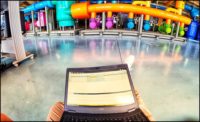This past March, I asked the question, “Do you have a corporate sustainability plan?” and recently I was discussing this topic with a director of a physical plant for a major college on the East Coast. He commented, “Energy conservation and environmental management should be a team effort.”
It immediately occurred to me that this usually isn’t the case at colleges, universities, health care facilities, and in industry in general, because energy is managed by one group (probably the facility management group) and the environment is managed by another group or two, and frequently there will be individual and/or group efforts to initiate other programs particularly related to the environment.
As we continued the discussion, we focused on most, if not all, of the participating factions needing to be involved with energy and environmental conservation.
• There is usually a “sustainability group” focusing their efforts on LEED® certification of new construction, major renovations, interior construction, and existing buildings, as well as other initiatives.
• There is the O&M group tasked with managing and reducing operating cost.
•There will most likely be individual groups actively pursuing environmental initiatives separate from the two groups above (e.g., electrical trades group standardizing on high-efficiency lights bulbs and motors that are kept in inventory).
• There may be various student groups who have particular topics that they want to champion, such as recycling bottles and cans in their dorm.
• There is the food service department, which may have its own environmental program that includes purchasing food locally and/or composting of waste.
• Planning and construction department may have established their own sustainability standards (materials, construction IAQ, etc.).
• The landscaping group could have a water conservation initiative in place.
• The purchasing department may have embraced my March column recommendation that requires all approved venders and/or contractors must have their own corporate sustainable plan.
I’m sure we left off a few others, but you get the idea. The purpose of my conversation with the director of physical plant was that we were in the initial phase of drafting a campus energy and environment master plan. One of our first goals was to bring all these groups together in a fact-finding forum and to consolidate all these proactive initiatives into one process (not program). One of this director’s goals is to change the culture of individual groups acting on their own, all with good intentions, and raise awareness among all participants of what each is doing on campus relative to energy conservation and the environment. His plan is to expand the campus’s open protocol BAS so that all these participants can raise public awareness of their initiatives via flat screen monitors located in each building.
Integral to this goal is to have metering installed in each building to collect data for those occupants relative to utility consumption and to provide benchmarked historical data vs. real-time data. It is expected that this information will contribute to friendly competition between buildings relative to domestic water, chilled water, hot water, steam, and electrical consumption and demand. Metering will be provided to the landscaping department to assist them with their water conservation activities, too.
Using flat screen monitors, each building will broadcast its energy and environment dashboard data live with the data in graph format to quickly and continuously remind everyone of the “total team effort” and to remind the team of the need to routinely communicate among themselves all these sustainable endeavors.
I know of a few institutions that have a diverse collaboration of people, departments, and factions working together, but for the most part even this may not be enough to maximize the process. It takes persistence on everyone’s part to maintain open communication over time and this is where the master plan we are creating will address this concern. All too often, individuals get preoccupied with their “day job” and need to be reminded of the ongoing energy and environment collaboration. Like other processes, sustainability requires continuous effort and participation by all and not by a select few. We hope the electronic dashboard in public spaces will provide that continuous reminder of teamwork through communication.
Using today’s technology and the imagination of many, communication methods captured in a campus energy and environment master plan will hold the key to sustainable success. Like the lessons learned from past continuous quality control initiatives, this master plan success will be built on continuous communication management using real-time data, benchmarking, and open-protocol automation to keep these lines of communication open. ES





